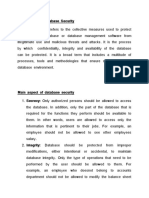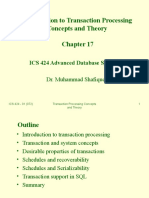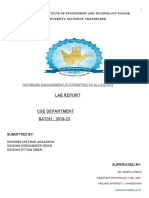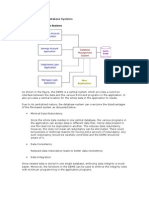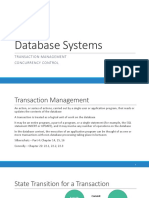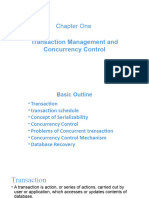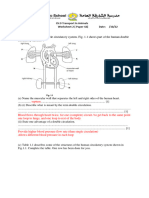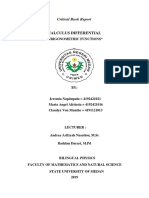0% found this document useful (0 votes)
238 views89 pagesTransaction Management Guide
This document discusses transaction management and concurrency control. It covers the objectives of transactions, properties of transactions including ACID properties, concurrency control techniques like locking and timestamping to ensure serializability, and recovery control including transaction logging and checkpointing to recover from failures. Serializability is defined as a way to allow concurrent execution of transactions while avoiding interference between transactions.
Uploaded by
Esubalew ChekolCopyright
© © All Rights Reserved
We take content rights seriously. If you suspect this is your content, claim it here.
Available Formats
Download as PPTX, PDF, TXT or read online on Scribd
0% found this document useful (0 votes)
238 views89 pagesTransaction Management Guide
This document discusses transaction management and concurrency control. It covers the objectives of transactions, properties of transactions including ACID properties, concurrency control techniques like locking and timestamping to ensure serializability, and recovery control including transaction logging and checkpointing to recover from failures. Serializability is defined as a way to allow concurrent execution of transactions while avoiding interference between transactions.
Uploaded by
Esubalew ChekolCopyright
© © All Rights Reserved
We take content rights seriously. If you suspect this is your content, claim it here.
Available Formats
Download as PPTX, PDF, TXT or read online on Scribd
/ 89















